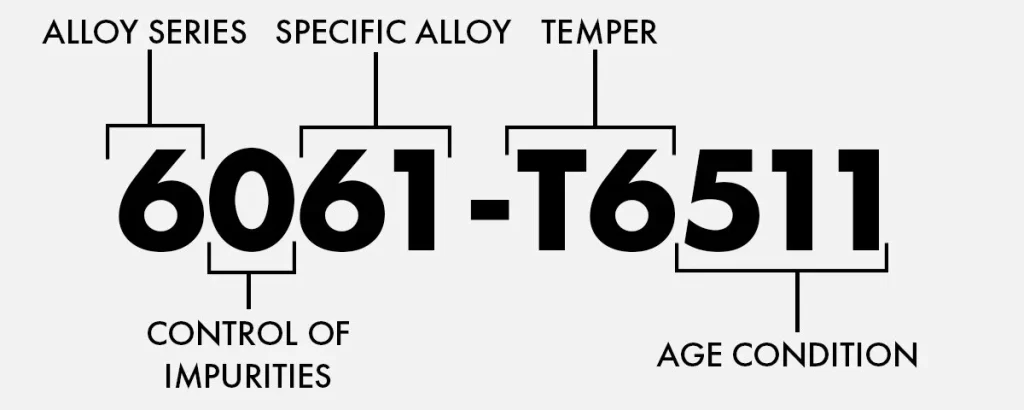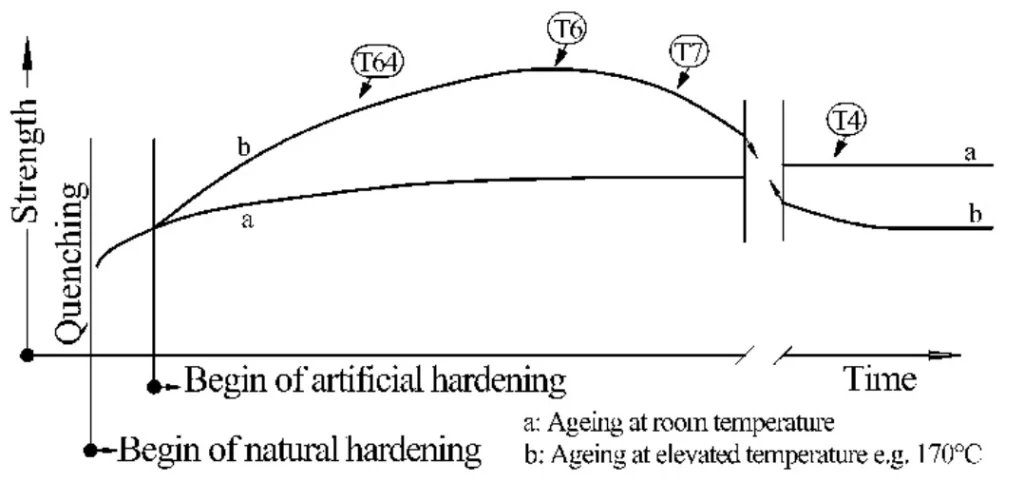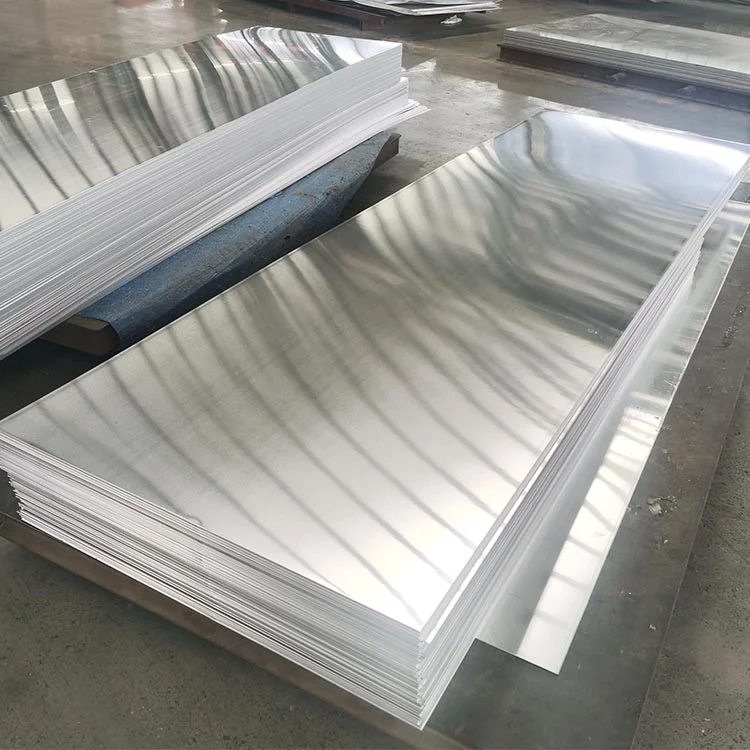Commonly used aluminum alloys: al 6082 t6, al6061 t6, 6060 t6 aluminium, al 6063 t5
Aluminium t6 alloys are widely used in various industries due to their lightweight, excellent strength-to-weight ratio, corrosion resistance, and versatility. Among the commonly used aluminum alloys, al 6082 t6, al6061 t6, 6060 t6 aluminium, and al 6063 t5 are notable examples. Let’s explore each alloy:

1. Aluminum Alloy al 6082 t6:
Aluminum alloy al 6082 t6 is a medium-strength alloy with good corrosion resistance and machinability. It consists of aluminum, magnesium, and silicon as the primary alloying elements. The T6 temper provides the alloy with high strength and hardness. It finds applications in structural components, transportation, marine structures, machinery, and sporting goods.
2. Aluminum Alloy al 6063 t5:
The extrudability and surface finish of aluminum alloy AL 6063 T5 are well-known. Silicon, magnesium, and aluminum make up its composition. Strong and elongation properties are provided by the T5 temper. Architectural and structural uses for al 6063 t5 include lightweight constructions, railings, and window and door frames.
Each of these aluminum alloys offers unique properties and characteristics suitable for specific applications. The choice of alloy depends on factors such as required strength, formability, corrosion resistance, and the specific demands of the application.
Aluminum alloy al6061 t6 is a versatile and widely used alloy known for its excellent strength, weldability, and corrosion resistance. It is composed of aluminum, magnesium, and silicon. The T6 temper provides the alloy with high strength and hardness. al6061 t6 is commonly used in aerospace components, automotive parts, bicycle frames, structural applications, and general machinery.

4. Aluminium alloy 6060 t6:
This medium-strength alloy has good formability and welding properties. Al, Mg, and Si make up this material. It becomes more robust and hardy with the T6 temper. Windows, doors, and extruded profiles for building are just a few examples of the architectural and ornamental uses for 6060 T6 aluminum.
What is aluminum temper?
Aluminum temper refers to the specific state or condition of aluminum alloy after it has undergone a heat treatment process. Heat treatment alters the mechanical properties of aluminum, such as its strength, hardness, and ductility, by controlling the microstructure of the material.
Aluminum alloys can be subjected to various temper designations, which are denoted by a combination of letters and numbers. The temper designation provides information about the specific heat treatment process used and the resulting properties of the aluminum. Some common temper designations include:
1. F (As Fabricated): The aluminum is in its initial, as-formed state, typically after being shaped or formed. It has not undergone any specific heat treatment.
2. O (Annealed): The aluminum is annealed, or softened, through a process of heating and slow cooling, which relieves internal stresses and increases the material’s ductility. This temper is characterized by low strength but high formability.

3. H (Strain Hardened): The H temper designations indicate that the aluminum has been strain hardened, also known as work hardened. The H temper is followed by one or more digits (e.g., H32, H14, H111), representing different levels of strain hardening and resulting mechanical properties.
4. T (Thermally Treated): The T temper designations are used for aluminum alloys that have undergone a heat treatment process, such as solution heat treatment and aging. The T temper is followed by one or more digits (e.g., T6, T651), indicating the specific heat treatment conditions and resulting mechanical properties.
Each temper designation represents a specific combination of mechanical properties suited for different applications. For example, the T6 temper provides a good balance of strength and formability, making it commonly used in structural applications, while the O temper offers excellent formability but lower strength, making it suitable for applications where ductility is crucial.
Examples of common temper designations for aluminum alloys
1. H12: This temper designation indicates that the aluminum alloy has undergone strain hardening to achieve a 1/4 hard condition. It offers moderate strength and improved formability.
2. H22: The H22 temper represents an aluminum alloy that has been strain hardened to a 1/4 hard condition, followed by partial annealing to improve its formability while maintaining some of the strength gained through strain hardening.
3. T4: The T4 temper signifies that the aluminum alloy has undergone solution heat treatment and then natural aging to achieve a stable condition. It provides moderate strength and good formability.
4. T651: This temper designation indicates that the aluminum alloy has undergone solution heat treatment, followed by artificial aging to achieve a stable condition. T651 offers high strength and excellent resistance to deformation.
5. T7351: The T7351 temper designates an aluminum alloy that has undergone solution heat treatment, followed by stabilized stretching and artificial aging. It provides very high strength, exceptional resistance to corrosion, and excellent fracture toughness.
6. H32: This temper represents an aluminum alloy that has been strain hardened to a 1/4 hard condition, offering moderate strength and improved resistance to deformation.
7. T6: The T6 temper is widely used and indicates that the aluminum alloy has undergone solution heat treatment, followed by artificial aging. T6 provides high strength, good formability, and is commonly used in structural applications.

What are some other common applications for aluminium t6?
Aluminium t6, which combines solution heat treatment and artificial aging, offer a desirable balance of strength, hardness, and formability. They are widely used in various applications across industries. Here are some common applications for Aluminium t6:
1. Aerospace Components: T6-tempered aluminum alloys are extensively used in the aerospace industry for structural components, including aircraft frames, wing structures, fuselage panels, and landing gear parts. The high strength-to-weight ratio and excellent fatigue resistance make T6 alloys suitable for these critical applications.
2. Automotive Parts: T6-tempered aluminum alloys find application in the automotive industry for various components. This includes engine blocks, cylinder heads, suspension components, transmission casings, and wheels. The lightweight nature and good mechanical properties of T6 alloys contribute to fuel efficiency, performance, and overall vehicle weight reduction.
3. Marine Structures: T6-tempered aluminum alloys in marine applications, such as boat hulls, decks, masts, and superstructures. The corrosion resistance of aluminum, along with its strength, makes T6 alloys suitable for enduring the harsh marine environment.
4. Sporting Goods: Aluminium t6 are used in the manufacturing of sporting goods, including bicycles, tennis rackets, golf club heads, baseball bats, and archery equipment. The combination of strength, lightness, and formability allows for improved performance and durability in these sports-related applications.
5. Industrial Machinery: T6-tempered aluminum alloys find use in various industrial machinery and equipment, such as frames, supports, brackets, and enclosures. The high strength and stiffness of T6 alloys contribute to the overall structural integrity of the machinery.
6. Structural Components: T6-tempered aluminum alloys are employed in the construction of buildings, bridges, and other structures where lightweight materials with good strength and durability are desired. Examples include curtain walls, façade panels, trusses, and beams.
It’s important to note that specific applications may vary depending on the particular alloy and the requirements of the application. The T6 temper is favored for its desirable mechanical properties and is widely adopted in industries where lightweight, strong, and corrosion-resistant materials are needed.

The solution heat treatment and artificial aging process for t6 temper.
The T6 temper for aluminum alloys involves a two-step heat treatment process: solution heat treatment and artificial aging. Here’s a breakdown of each step:
1. Solution Heat Treatment (T6):
During the solution heat treatment, the aluminum alloy is heated to a specific temperature, typically around 500-550°C (932-1022°F), depending on the alloy composition. The purpose of this step is to dissolve the alloying elements uniformly into the aluminum matrix.
The alloy is held at this elevated temperature for a certain period, allowing for the complete dissolution of the alloying elements. This homogenizes the alloy and eliminates any segregated regions or precipitates that may have formed during the alloy’s processing or previous heat treatments.
2. Artificial Aging (T6):
After the solution heat treatment, the aluminum alloy is rapidly cooled, typically through quenching in water or air. This rapid cooling helps to retain the dissolved alloying elements within the aluminum matrix.
The quenched alloy is then subjected to artificial aging, which involves reheating it to a lower temperature, typically in the range of 150-200°C (302-392°F), for several hours. This aging temperature and duration are specific to the alloy and are determined by its composition and desired properties.
During the artificial aging process, the alloying elements start to precipitate out of the supersaturated solid solution formed during the solution heat treatment. The precipitates form fine particles or clusters within the aluminum matrix, contributing to the strengthening of the material.
The combination of the solution heat treatment and artificial aging processes results in the T6 temper, which provides the aluminum alloy with improved strength, hardness, and mechanical properties while maintaining good formability and ductility.
It’s worth noting that the specific temperature and time parameters for solution heat treatment and artificial aging can vary depending on the alloy composition and the desired properties. These parameters are carefully controlled to achieve the desired microstructure and mechanical characteristics for the particular aluminum alloy being treated.

How does the T6 temper compare to other tempering processes for aluminum alloys?
The T6 temper for aluminum alloys is one of the most commonly used tempering processes and offers a desirable combination of strength, hardness, and formability. However, it’s important to note that there are other tempering processes for aluminum alloys that result in different mechanical properties. Here’s a comparison of the T6 temper with some other common tempering processes:
1. T4 Temper:
The T4 temper involves solution heat treatment and natural aging. Compared to the T6 temper, T4-tempered alloys have lower strength and hardness but higher formability. T4 is often chosen when maximum formability is required, sacrificing some strength and hardness.
2. T5 Temper:
The T5 temper involves artificial aging without the initial solution heat treatment. T5-tempered alloys have lower strength compared to the T6 temper but retain higher formability. T5 is commonly used when moderate strength is needed, along with good formability and improved resistance to stress corrosion cracking.
3. T7 Temper:
The T7 temper involves solution heat treatment, followed by stabilization (overaging) and artificial aging. T7-tempered alloys have higher strength and hardness compared to the T6 temper but may have slightly reduced formability. T7 is used when maximum strength and hardness are required, sacrificing some formability.
4. O Temper (Annealed):
The O temper refers to the annealed condition of aluminum alloys, achieved through a process of heating and slow cooling. Alloys in the O temper have low strength but high formability. O temper is selected when maximum formability and ease of fabrication are the primary requirements, sacrificing strength.
The choice of tempering process depends on the specific application requirements, balancing factors such as strength, hardness, formability, and resistance to corrosion or other environmental factors.

How does the t6 temper compare to the O temper in terms of resistance to stress corrosion cracking?
In terms of resistance to stress corrosion cracking (SCC), aluminum alloys in the T6 temper generally offer better resistance compared to those in the O temper. Stress corrosion cracking is a type of corrosion that occurs in the presence of tensile stress and a corrosive environment, leading to the formation and propagation of cracks in the material.
1. T6 Temper:
Aluminum alloys in the T6 temper, which involves solution heat treatment and artificial aging, typically exhibit improved resistance to stress corrosion cracking. The precipitation of fine particles during artificial aging can effectively hinder the propagation of cracks and enhance the material’s resistance to corrosive environments. The T6 temper is often selected for applications in which both strength and resistance to stress corrosion cracking are important.
2. O Temper (Annealed):
Aluminum alloys in the O temper, which refers to the annealed condition, generally have lower resistance to stress corrosion cracking compared to alloys in the T6 temper. The annealed condition lacks the strengthening precipitates that are formed during the artificial aging process of the T6 temper. As a result, the O temper alloys may be more susceptible to stress corrosion cracking, particularly when exposed to corrosive environments in the presence of tensile stress.
The resistance to stress corrosion cracking can also depend on other factors such as alloy composition, environmental conditions, applied stress levels, and the specific corrosive medium involved. Different aluminum alloy compositions and temper conditions may exhibit varying degrees of resistance to stress corrosion cracking. In applications where stress corrosion cracking is a concern, selecting aluminum alloys in the T6 temper or employing additional protective measures, such as surface treatments or coatings, can help mitigate the risk of this type of corrosion.



